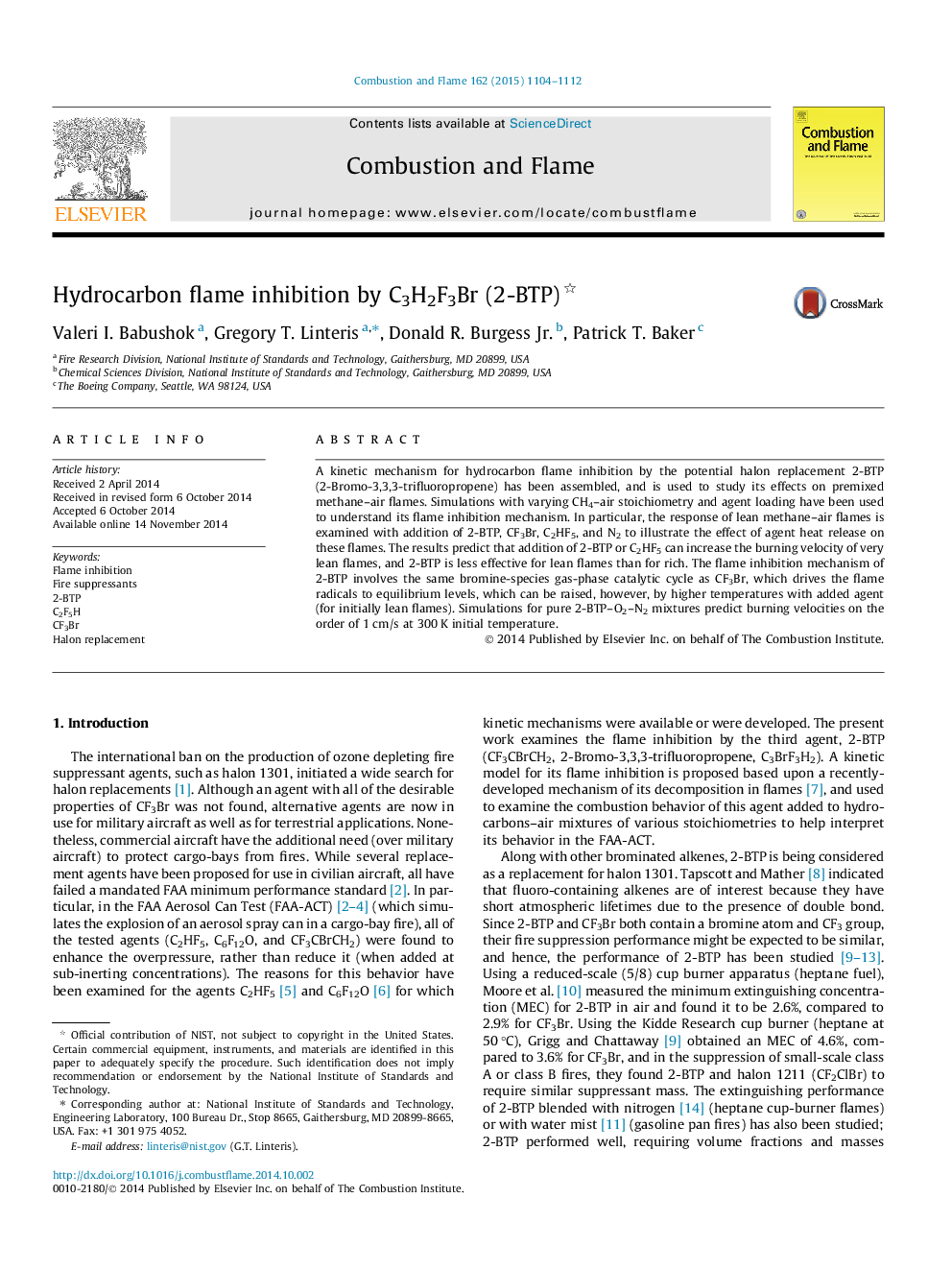| Article ID | Journal | Published Year | Pages | File Type |
|---|---|---|---|---|
| 168741 | Combustion and Flame | 2015 | 9 Pages |
A kinetic mechanism for hydrocarbon flame inhibition by the potential halon replacement 2-BTP (2-Bromo-3,3,3-trifluoropropene) has been assembled, and is used to study its effects on premixed methane–air flames. Simulations with varying CH4–air stoichiometry and agent loading have been used to understand its flame inhibition mechanism. In particular, the response of lean methane–air flames is examined with addition of 2-BTP, CF3Br, C2HF5, and N2 to illustrate the effect of agent heat release on these flames. The results predict that addition of 2-BTP or C2HF5 can increase the burning velocity of very lean flames, and 2-BTP is less effective for lean flames than for rich. The flame inhibition mechanism of 2-BTP involves the same bromine-species gas-phase catalytic cycle as CF3Br, which drives the flame radicals to equilibrium levels, which can be raised, however, by higher temperatures with added agent (for initially lean flames). Simulations for pure 2-BTP–O2–N2 mixtures predict burning velocities on the order of 1 cm/s at 300 K initial temperature.
